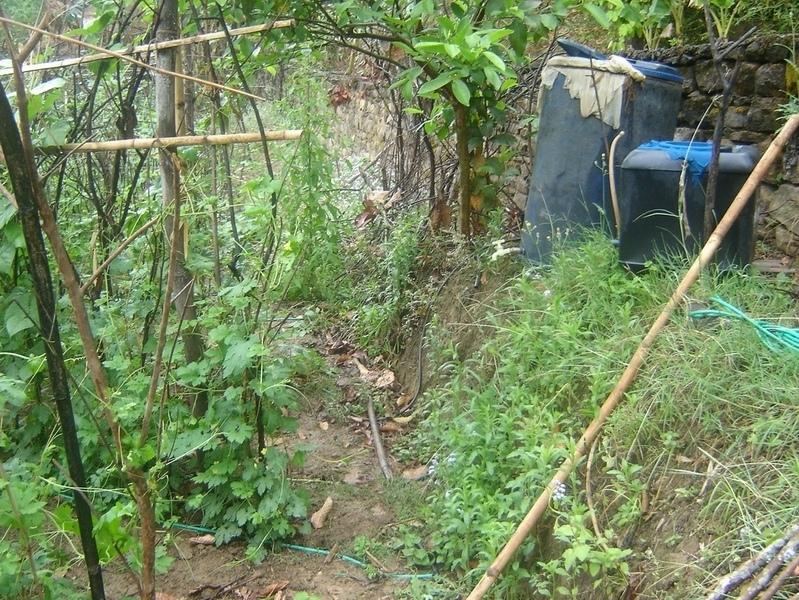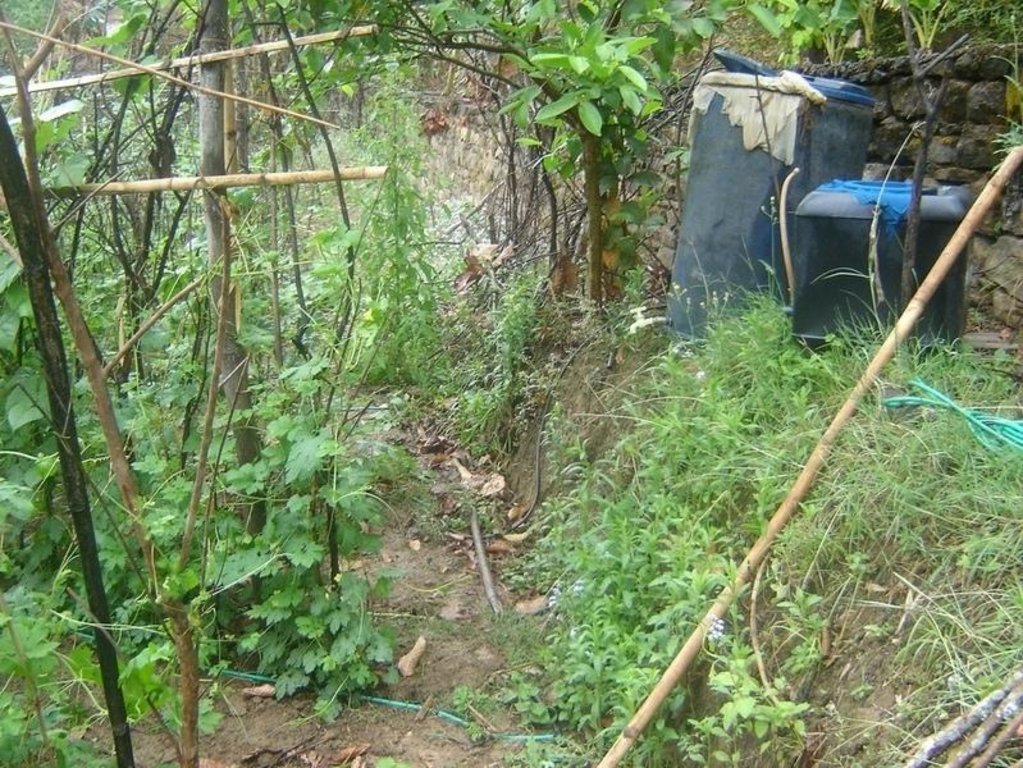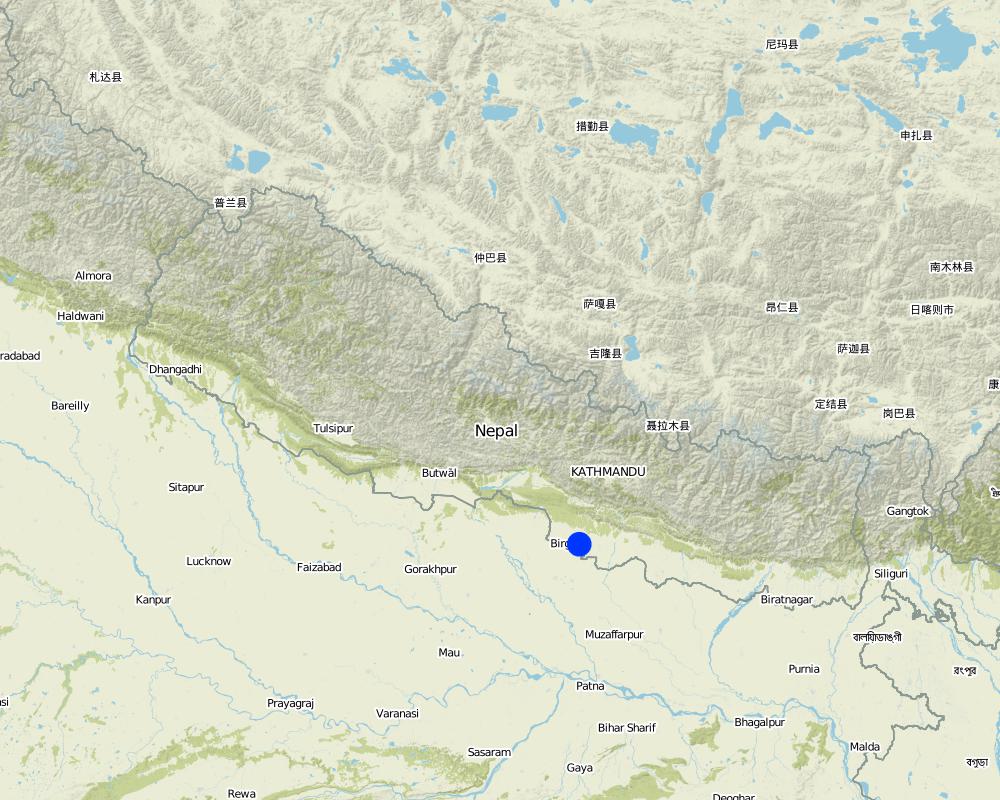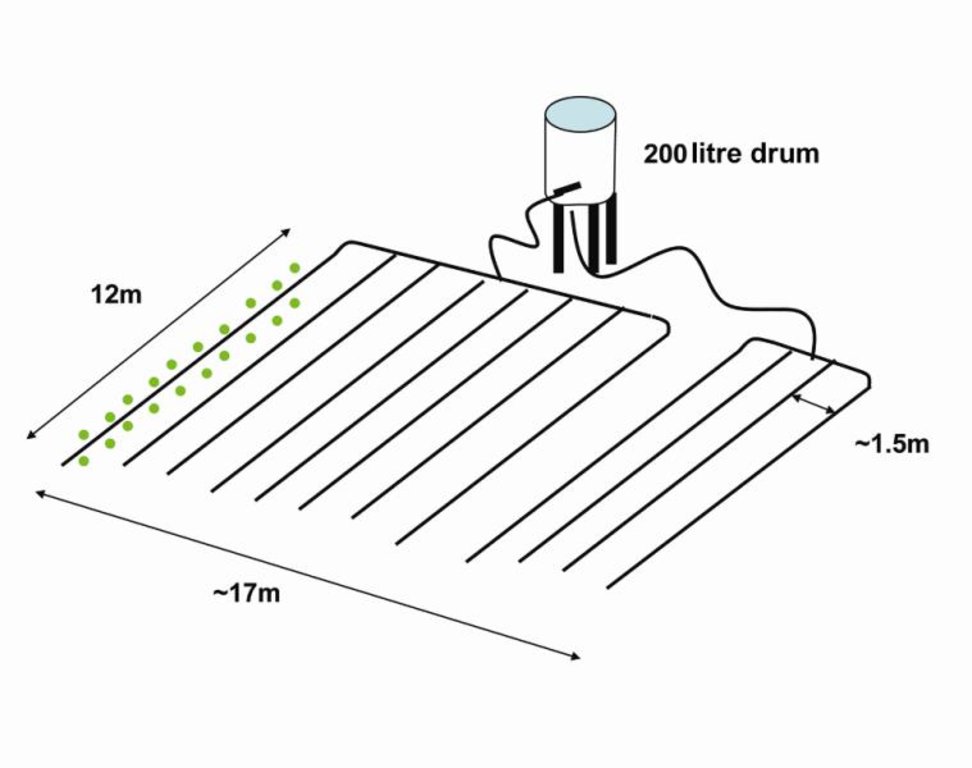Urine application through drip irrigation for bitter gourd production [Непал]
- Создание:
- Обновить:
- Составитель: Richard Allen
- Редактор: –
- Рецензенты: David Streiff, Alexandra Gavilano
Karela kheti ma thopa sinchai ko satha ma pasu mutra ko prayog (Nepali)
technologies_1751 - Непал
Просмотреть разделы
Развернуть все Свернуть все1. Общая информация
1.2 Контактные данные специалистов и организаций, участвующих в описании и оценке Технологии
Специалист по УЗП:
Director
Soil Management Directorate, Department of Agriculture
Непал
Специалист по УЗП:
Team Leader
Sustainable Soil Management Programme
Непал
Название проекта, содействовавшего документированию/оценке Технологии (если применимо)
Sustainable Soil Management Programme, Nepal (SSMP)Название организации (-ий), содействовавших документированию/оценке Технологии (если применимо)
Department of Agriculture, Soil Management Directorate, Hariharbhawan Lalitpur (doasoil) - НепалНазвание организации (-ий), содействовавших документированию/оценке Технологии (если применимо)
HELVETAS (Swiss Intercooperation)1.3 Условия, регламентирующие использование данных, собранных ВОКАТ
Составитель и ответственный(-ые) специалист(-ы) согласны с условиями, регламентирующими использование собранных ВОКАТ данных:
Да
1.5 Ссылка на Анкету (ы) по Подходам УЗП (документируется с использованием ВОКАТ)
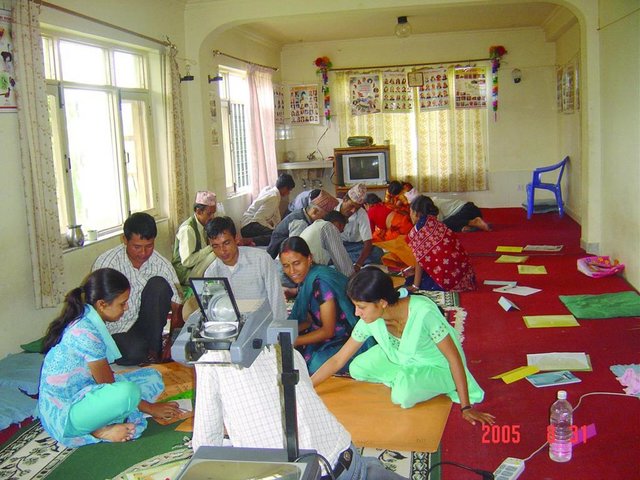
Farmer field schools on integrated plant nutrient systems [Непал]
Participatory and collaborative learning through the farmer field school approach
- Составитель: Richard Allen
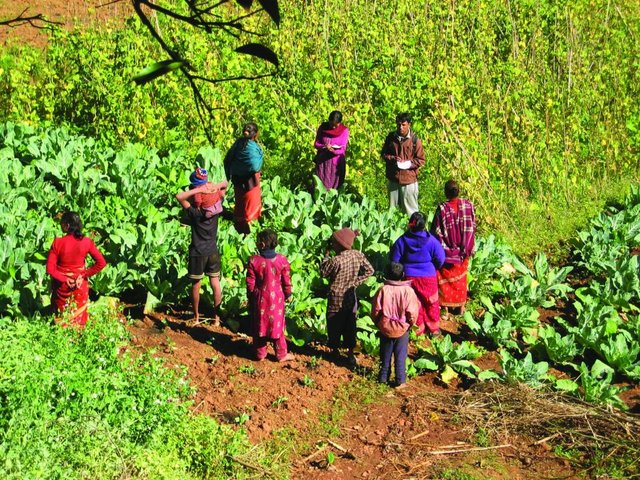
Farmer-to-farmer diffusion [Непал]
Wider diffusion of sustainable soil management technologies through a demand responsive farmer-to-farmer diffusion approach
- Составитель: Richard Allen
2. Описание Технологии УЗП
2.1 Краткое описание Технологии
Определение Технологии:
Application of cattle urine through drip irrigation technology to provide constant flow of fertiliser to bitter gourd
2.2 Подробное описание Технологии
Описание:
Bitter gourd vegetables fetch a high price in the off-season and respond well if grown with drip irrigation. This crop is planted in December/January and harvested from May through to July/August. The growing period mainly falls in the driest period of the year and therefore requires irrigation.
In addition to water, the plants need fertiliser to ensure healthy growth and good production. Nitrogen is the most important macronutrient for plants and high crop productivity can only be achieved if sufficient nitrogen is available. Nitrogen is also the most limiting nutrient in most areas of Nepal’s midhills. Traditionally farmers applied farmyard manure; but in many places this is being supplemented or entirely replaced by inorganic fertiliser, mainly urea. However, fertiliser prices have increased substantially in recent years and this type of fertiliser is often not available in sufficient quantities in areas away from the roadheads. At the same time cultivation practices are intensifying with greater cropping intensities and more nutrient demanding crops as local varieties are replaced by hybrids and new crops are introduced. This can easily lead to nutrient mining and soil fertility decline unless there is an equivalent increase in inorganic or mineral fertilisation.
Cattle urine is a viable alternative to mineral fertiliser; it is nitrogen rich. The urine is collected in improved cattle sheds (fact sheet on urine collection QT NEP1). For constant fertiliser application and to reduce the water requirement, the collected urine can be added to the irrigation water in the drip irrigation tanks (fertigation). Farmers who have tried this say it has increased the yield of bitter gourd and other cash crops, in some cases by as much as 100%. Other crops that can be grown using drip irrigation with a water-urine mixture are cauliflower, cucumber, and other types of gourd.
2.3 Фотографии, иллюстрирующие Технологию
2.5 Страна/ регион/ места, где применяется Технология, информация о которых собрана в данной Анкете
Страна:
Непал
Более точная привязка места:
Midhills districts of Nepal
Охарактеризуйте пространственное распространение Технологии :
- равномерно-однородное применение на определенной площади
Map
×3. Классификация Технологии УЗП
3.1 Основные цели и задачи реализации Технологии
- повышение производства
3.2 Текущий(-ие) тип(-ы) землепользования на территории, где применяется Технология
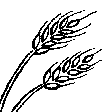
Пахотные угодья и плантации
- Однолетние культуры
Ежегодный урожай - Уточните культуры:
- овощи - дыня, тыква, сквош или тыква
Пояснения:
Major land use problems (compiler’s opinion): Intensifying cultivation practices with either 1) inadequate application of fertilisers leading to a decline in soil fertility and the mining of soil nutrients or 2) application of too much fertiliser causing environmental problems through excessive leaching, and losses of fertiliser in surface runoff and consequent eutrophication or nitrification of streams, ponds, or groundwater. Also, irrigation water is in short supply during 6 to 8 months of the year. Fertigation allows about 20 to 30% of the irrigation water to be replaced by urine.
3.5 Категория УЗП, к которой относится Технология
- Комплексное управление почвенным плодородием
3.6 Мероприятия УЗП, выполняемые в рамках Технологии
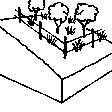
управленческие мероприятия
- У2: Изменение формы/ интенсивности хозяйствования
3.7 Основные проблемы деградации земель, на решение которых направлена Технология
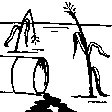
ухудшение химических свойств почв
- Хп: Снижение плодородия и уменьшение содержания органического вещества (вызванное не эрозией, а другими причинами)
3.8 Предотвращение и снижение деградации земель, или восстановление нарушенных земель
Укажите цель Технологии по отношению к деградации земель :
- снижение деградации земель
4. Технические характеристики, мероприятия по практической реализации, вложения и стоимость
4.1 Технический рисунок, иллюстрирующий Технологию
Спецификация (пояснения к техническому рисунку):
The following setup was used in Iman Singh Basnet’s fi eld:
- two drip irrigation sets: one set with
8 lines, one with 4 lines
- a 200 l plastic drum
- 20 bitter gourd plants per line with
1.5m spacing between lines
- approximate area covered: 200m2
Note that the drum was not delivered with the drip irrigation set. Mr Basnet uses the same drum for irrigating other crops where drip irrigation is not feasible, in which case he connects a pipe with a rose to the drum.
Technical knowledge required for field staff / advisors: low
Technical knowledge required for land users: low
Main technical functions: supplementary irrigation, constant and slow supply of nutrients, increase in soil fertility & increase in soil productivity
Secondary technical functions: pest control
4.2 Общая информация по необходимым вложениям и стоимости
Уточните, как рассчитывались затраты и вложения:
- на технологическую единицу
Укажите единицу:
Drip irrigation system
Укажите единицы измерения (если необходимо):
200 l plastic drum; 20 bitter gourd plants per line with 1.5m spacing between lines
Укажите денежные единицы, использованные для подсчета затрат:
- Доллары США
Укажите среднюю дневную заработную плату наемных работников:
2.00
4.3 Мероприятия, необходимые для начала реализации
| Деятельность | Время (сессия) | |
|---|---|---|
| 1. | Prepare and place stakes | |
| 2. | Collect urine (see WOCAT fact sheet ‘Improved cattle shed for improved urine collection – QT NEP1) | |
| 3. | Grow bitter gourd seedlings | |
| 4. | Set up drip irrigation set and prepare field | |
| 5. | Transplant seedlings |
4.4 Вложения и затраты, необходимые для начала реализации
| Опишите затраты | Единица | Количество | Затраты на единицу | Общая стоимость на единицу | % затрат, оплаченных землепользователями | |
|---|---|---|---|---|---|---|
| Оплата труда | Collect urine and prepare irrigation system | persons/unit | 2,0 | 2,0 | 4,0 | 100,0 |
| Оборудование | Drip set | unit | 1,0 | 36,0 | 36,0 | 100,0 |
| Оборудование | Drum | unit | 1,0 | 4,0 | 4,0 | 100,0 |
| Строительные материалы | Stakes | unit | 1,0 | 6,0 | 6,0 | 100,0 |
| Общая стоимость запуска Технологии | 50,0 | |||||
| Общие затраты на создание Технологии в долларах США | 50,0 | |||||
Пояснения:
Duration of establishment phase: 1 month(s)
4.5 Поддержание/ текущее обслуживание
| Деятельность | Сроки/ повторяемость проведения | |
|---|---|---|
| 1. | Clear drip holes | |
| 2. | Double filter the urine – once when taking out of the collection tank, and again when pouring into the drip irrigation tank | |
| 3. | Irrigate every alternate day with 160 l water and 40 l urine. | |
| 4. | Fix shoots to the stakes | |
| 5. | Raise ridges for better irrigation efficiency | |
| 6. | Harvest the crop |
4.6 Стоимость поддержания/ текущего обслуживания ( в год)
| Опишите затраты | Единица | Количество | Затраты на единицу | Общая стоимость на единицу | % затрат, оплаченных землепользователями | |
|---|---|---|---|---|---|---|
| Оплата труда | Maintain drip irrigatio nsystem and apply urine | persons/unit | 15,0 | 2,0 | 30,0 | 100,0 |
| Общая стоимость поддержания Технологии | 30,0 | |||||
| Общие затраты на поддержание Технологии в долларах США | 30,0 | |||||
Пояснения:
Cost calculated in January 2007.
5. Природные и социально-экономические условия
5.1 Климат
Среднегодовое количество осадков
- < 250 мм
- 251-500 мм
- 501-750 мм
- 751-1000 мм
- 1001-1500 мм
- 1501-2000 мм
- 2001-3000 мм
- 3001-4000 мм
- > 4000 мм
Агроклиматическая зона
- влажная
Thermal climate class: subtropics
5.2 Рельеф
Склоны (преобладающие):
- пологие (0-2%)
- покатые (3-5%)
- покато-крутые (6-10%)
- крутые (11-15%)
- очень крутые (16-30%)
- чрезвычайно крутые (31-60%)
- обрывистые (>60%)
Формы рельефа:
- плато/ равнины
- гребни хребтов/холмов
- склоны гор
- склоны холмов
- подножья
- днища долин
Зона высотной поясности:
- 0-100 м над уровнем моря
- 101-500 м н.у.м.
- 501-1000 м н.у.м.
- 1001-1500 м н.у.м.
- 1501-2000 м н.у.м.
- 2001-2500 м н.у.м.
- 2501-3000 м н.у.м.
- 3001-4000 м н.у.м.
- > 4 тыс. м н.у.м.
Комментарии и дополнительные сведения по условиям рельефа/ топографии :
Landforms: Also valley floors
5.6 Характеристика землепользователей, применяющих Технологию
Рыночная ориентация производства:
- натуральное хозяйство (самообеспечение)
- товарное/ рыночное хозяйство
Индивидуальное или коллективное хозяйство:
- частное/ домовладение
Укажите другие важные характеристики землепользователей:
Off-farm income specification: In most farm households, off-farm income plays at least a minor and increasingly a major role. Occasional opportunities for off-farm income present themselves in the form of daily labour wages. Some households’ members receive regular salaries, whilst an increasing number of Nepalis are working in India, the Middle East, Malaysia, and elsewhere and sending remittance incomes home.
5.7 Средняя площадь земель, используемых землепользователями с применением Технологии
- < 0,5 га
- 0,5-1 га
- 1-2 га
- 2-5 га
- 5-15 га
- 15-50 га
- 50-100 га
- 100-500 га
- 500-1000 га
- 1000-10000 га
- > 10000 га
5.8 Собственность на землю, права на земле- и водопользование
Землевладелец:
- индивидуальная, не оформленная в собственность
Право землепользования:
- аренда
- индивидуальное
6. Воздействия и заключительные положения
6.1 Влияние Технологии УЗП в пределах территории ее применения
Социально-экономическое воздействие
Продуктивность
производство сельскозяйственных культур
Доходы и затраты
сельскохозяйственные издержки
Комментарий/ пояснения:
reduced expenses for agrochemicals (fertilisers, pesticides)
Другое социально-экономическое воздействие
Allows organic production of high value crops
establishment costs
Социальное и культурное воздействие
social prestige as a progressive farmer
requires handling of dung and urine
Экологическое воздействие
Другие экологические последствия
application of agrochemicals (fertilisers, pesticides)
eutrophication, nitrification of water bodies due to uncontrolled outflow of urine
6.2 Влияние Технологии за пределами территории ее применения
загрязнение подземных/ речных вод
Комментарий/ пояснения:
reduced influx of nutrients into water bodies
dependence on costly external inputs
6.4 Анализ эффективности затрат
Насколько получаемый результат сопоставим с первоначальными вложениями (с точки зрения землепользователей)?
Эффективность затрат в краткосрочной перспективе:
позитивное
Эффективность затрат в долгосрочной перспективе:
позитивное
Насколько получаемый результат сопоставим с текущими расходами по поддержанию технологии (с точки зрения землепользователей)?
Эффективность затрат в краткосрочной перспективе:
позитивное
Эффективность затрат в долгосрочной перспективе:
позитивное
Пояснения:
The high cost of mineral fertiliser and the high price that bitter gourd fetches means that the establishment costs are soon recovered. In the long-term, a major reduction in fertiliser costs and improved income leads to increased benefits.
6.5 Внедрение Технологии
- отдельные случаи/ эксперимент
Среди применяющих Технологию землепользователей, какова доля лиц, применяющих её по собственной инициативе, т.е. без какого-либо материального стимулирования со стороны?
- 91-100%
Пояснения:
Comments on spontaneous adoption: Some farmers in Surkhet district started to use the technology in 2006, after seeing Iman Singh Basnet's innovation of applying urine through drip irrigation in 2005.
6.7 Сильные стороны/ преимущества/ возможности Технологии
| Сильные стороны/ преимущества/ возможности по мнению составителя или других ключевых специалистов |
|---|
|
Urine as a liquid manure is applied at the same time as irrigation (fertigation) How can they be sustained / enhanced? The link between urine application and drip irrigation or other forms of small scale irrigation needs to be promoted |
|
The on-farm use of collected urine reduced the need for mineral fertiliser thereby reducing cash expenditure and outside dependency How can they be sustained / enhanced? Further promote the technology to increase this impact |
|
Human urine can also be used, but needs to be fermented longer and may be socially less acceptable How can they be sustained / enhanced? Further promote the use of urine and show that there is no problem with using human urine |
6.8 Слабые стороны/ недостатки/ риски Технологии и пути их преодоления
| Слабые стороны/ недостатки/ риски по мнению составителя или ответственных специалистов | Возможные пути их преодоления/снижения? |
|---|---|
| The initial establishment costs for a drip irrigation set may hinder adoption |
Prepare a business plan and calculate the cost-benefi t to convince farmers of the technology’s benefi ts |
| Lack of availability of urine may inhibit the commercial application of urine with drip irrigation | Urine needs to be established as a tradeable good produced by livestock farmers and bought by vegetable farmers to apply to their crops |
7. Справочные материалы и ссылки
7.1 Методы сбора/ источники информации
Ссылки и модули
Развернуть все Свернуть всеСсылки

Farmer field schools on integrated plant nutrient systems [Непал]
Participatory and collaborative learning through the farmer field school approach
- Составитель: Richard Allen

Farmer-to-farmer diffusion [Непал]
Wider diffusion of sustainable soil management technologies through a demand responsive farmer-to-farmer diffusion approach
- Составитель: Richard Allen
Модули
Нет модулей


